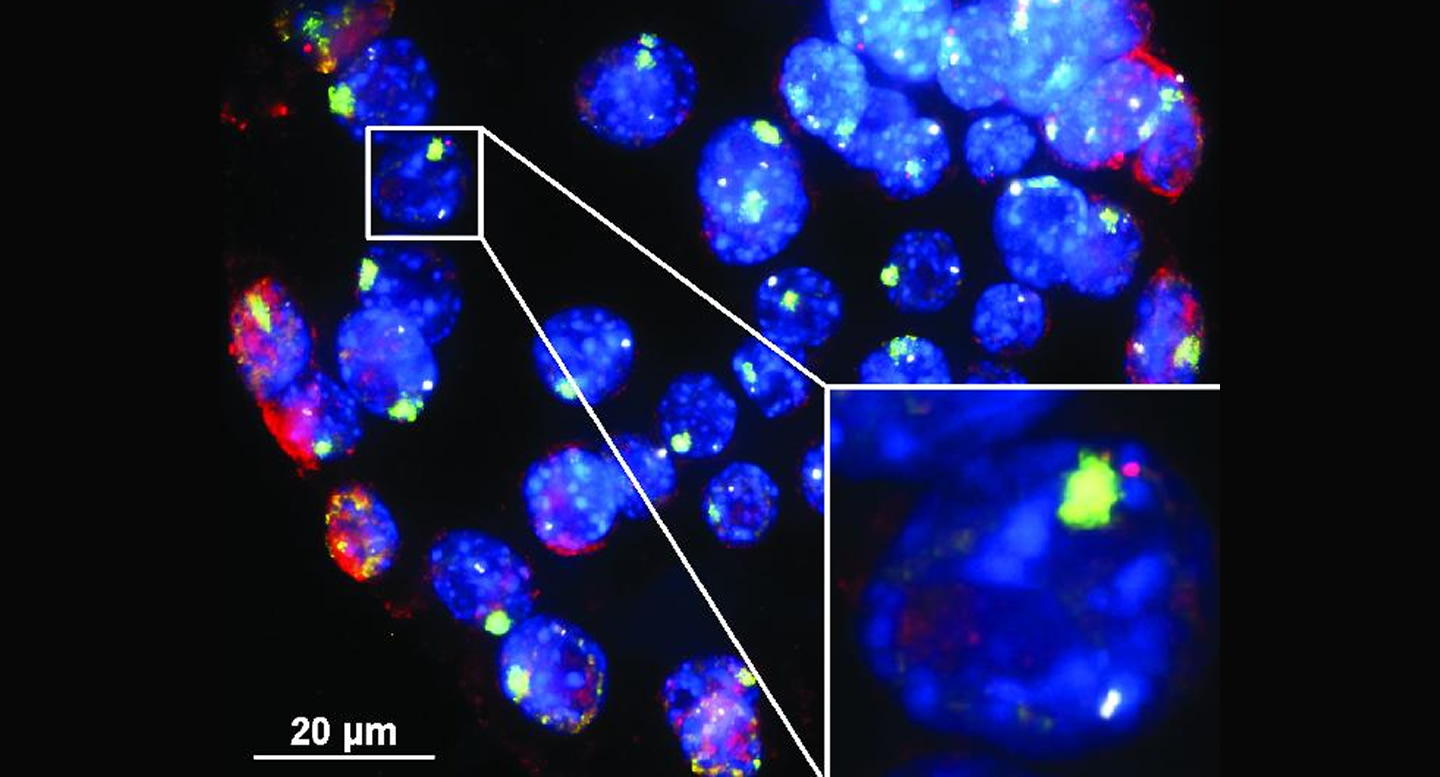Antisense RNA Found That Controls the X Chromosome Inactivation Regulator
By LabMedica International staff writers
Posted on 05 Nov 2015
Genomics researchers have learned how one of a female's two X chromosomes is rendered inactive, which prevents development of most diseases linked to X chromosome genetic defects.Posted on 05 Nov 2015
The lncRNA (long, non-coding RNA) Xist (X-inactive specific transcript) has been known to be essential to the process of silencing one copy of the X chromosome in female embryos. Having two copies of the X chromosome is an abnormality that leads to death early of the embryo during development.

Image: In these mouse embryo cells, XistAR RNA strands show up in red, and the Xist RNA whose production they trigger show up in green (Photo courtesy of University of Michigan).
Long non-coding RNAs (long ncRNAs, lncRNA) are non-protein coding transcripts longer than 200 nucleotides. This somewhat arbitrary limit distinguishes lncRNAs from small regulatory RNAs such as microRNAs (miRNAs), short interfering RNAs (siRNAs), Piwi-interacting RNAs (piRNAs), small nucleolar RNAs (snoRNAs), and other short RNAs. LncRNAs have been found to be involved in numerous biological roles including imprinting, epigenetic gene regulation, cell cycle and apoptosis, and metastasis and prognosis in solid tumors. Most lncRNAs are expressed only in a few cells rather than whole tissues, or they are expressed at very low levels, making them difficult to study.
Investigators at the University of Michigan (Ann Arbor, USA) have now discovered how Xist is regulated. They reported in the October 19, 2015, online edition of the journal Nature Communications that they had found an Xist antisense long lncRNA, XistAR (Xist Activating RNA), which was encoded within exon one of the mouse XIST gene and was transcribed only from the inactive X chromosome. In addition, they found that the XIST gene on the otherwise “silent” X chromosome was read in both the forward and backward direction. Production of XistAR in the backward direction was required to generate Xist RNA in the forward direction and turn off the X chromosome.
“This work sheds light into how lncRNAs function, how genes and even an entire chromosome can be quieted. XistAR provides a molecular target to control gene expression—how to "wake the genes up" or reduce their activity,” said senior author Dr. Sundeep Kalantry, assistant professor of human genetics at the University of Michigan. “Exploring how the X chromosome becomes inactivated lets us know how to selectively activate it. Turning on the healthy copy of an X chromosome gene maybe a way to minimize disease risks associated with the X chromosome.”
“The control of genes by lncRNAs, often via epigenetic means, is now appreciated to occur in a wide variety of contexts, from normal physiology to diseases. On a fundamental level, it controverts the central dogma of DNA begetting RNA, which then makes proteins,” said Dr. Kalantry. “The techniques we have developed facilitate the discovery of rare RNA species in a cell. Such RNAs have been missed by high-throughput sequencing approaches, but maybe essential for cell function.”
Related Links:
University of Michigan














